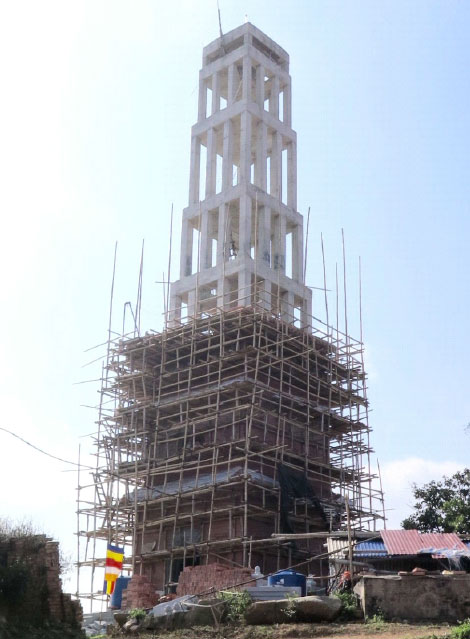Restoration of 11th century Tuong Long Pagoda in Hai Phong completed
- Keo pagoda in Nam Dinh recognised as national relic site
- More tourists visit temple, pagoda sites in An Giang
- Non Nuoc Pagoda – an architectural masterpiece in a Hanoi suburb
- Bai Dinh Pagoda Festival opens in Ninh Binh
The restoration project had started 9 years ago. The pagoda, which has been recognized as a national heritage, is the largest Buddhist architectural complex in the northern coastal region. It is located along the national tourist route of Do Son - Cat Ba - Ha Long Bay.
The restored Tuong Long Pagoda is expected to contribute to protecting and preserving historical and cultural values of the nation, serving ecological and spiritual cultural tourism.
 |
| The pagoda, which has been recognized as a national heritage, is the largest Buddhist architectural complex in the northern coastal region. |
The structure will also help further study the values of the original Tuong Long Pagoda during the history of the country’s building, development and defense.
The restoration project began in June 2008, covered an area of 2.000m² and included a nine-storey pagoda standing on a square base with four stairs.
According to historical records, Emperor Thanh Tong ordered the construction of a pagoda when visiting the Do Son area and named it Tuong Long, meaning Auspicious Dragon after having a vision of a golden dragon in his dream. The original pagoda was 45 metres tall and built on top of hill roughly 100 metres above sea level, making it one of the highest towers at the time of its completion.
 |
| The restoration project began in June 2008, covered an area of 2.000m² and included a nine-storey pagoda standing on a square base with four stairs. |
In the past, Tuong Long was also used as a watch tower as part of an information transmission system in order to send warnings to the capital city if any suspicious foreign activities were detected offshore.
Since its construction nearly one thousand years ago, the pagoda underwent many renovations under the Tran and Le Dynasties but was demolished in the early 1800s to obtain bricks for the construction of the Citadel of Hai Duong.

